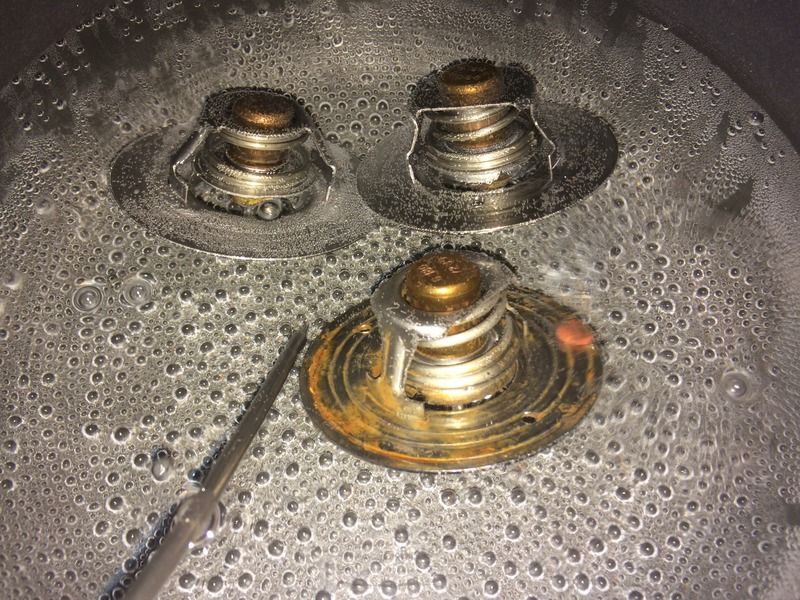dartman59
Well-Known Member
Hello all. New crate motor--360 LA stroked to 408. Brand new four-row brass radiator. Yesterday was first run for me (had been on the Dyno successfully at the builder's shop). I put two gallons of distilled water and 1.5 gal antifreeze in the radiator immediately prior to starting. I have a new 180 deg thermostat in it. I did the first start, and it ran for a half hour or so, and stayed at a steady 180 degrees. Revved it a little but not anything serious. Then I shut 'er 'h.
This evening, I cleared my tools away, started it up, and took it out on the road for the first time. Within a couple of miles, the temp gauge started to climb and rapidly went up to 250 deg!! Maybe even higher! I shut it down, and sat and waited for it cool down, which it did albeit slowly. When it got got down to 165, I fired it up and drove slowly home, about three mikes. It was at 240-250 when I home.
Any ideas what could be going on? I never burped the radiator--it felt like maybe:tool: there was an air lock in the block. Stuck thermostat? When I did shut it down, it was making weird clanging noises like someone beating on a radiator with a pipe wrench. I hope I didn't fry my new engine!! Thanks in advance or your thoughts no opinions.
This evening, I cleared my tools away, started it up, and took it out on the road for the first time. Within a couple of miles, the temp gauge started to climb and rapidly went up to 250 deg!! Maybe even higher! I shut it down, and sat and waited for it cool down, which it did albeit slowly. When it got got down to 165, I fired it up and drove slowly home, about three mikes. It was at 240-250 when I home.
Any ideas what could be going on? I never burped the radiator--it felt like maybe:tool: there was an air lock in the block. Stuck thermostat? When I did shut it down, it was making weird clanging noises like someone beating on a radiator with a pipe wrench. I hope I didn't fry my new engine!! Thanks in advance or your thoughts no opinions.

















